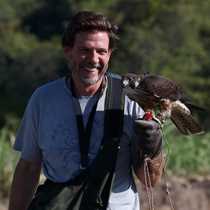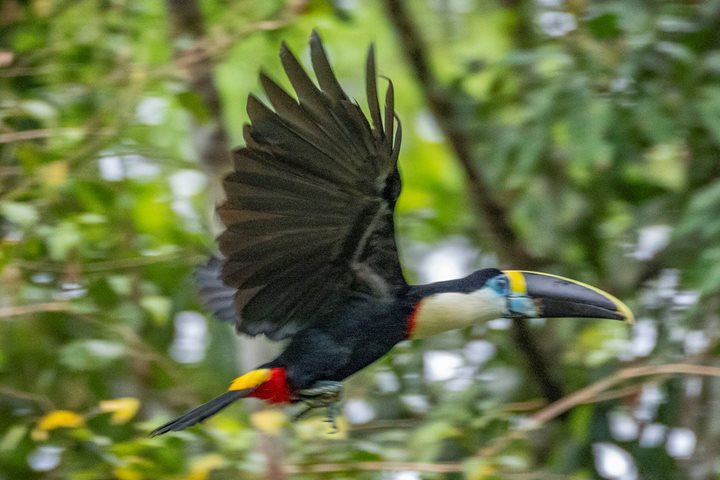After having spent the night tied to the shore along the Ucayali River, we boarded the skiffs a bit earlier than usual in order to maximize our time and good early morning light: we were in the vicinity of the Belluda Caño in an area favored by red-bellied and blue and yellow macaws. We were not disappointed and quickly found large numbers of the gorgeous red-bellied macaws perched together on dead branches next to the river. Many more were flying around and their lively and loud vocalizations completely filled the air. But they were not the loudest or prettiest creatures around, because the much larger and incredibly beautiful blue and yellow macaws showed themselves. We watched them for a long time as groups of them flew around or spent time perched high on trees or dead aguaje palms were they nest, preening themselves or having loud disputes for the possession of a particular branch. What a delightful morning! But the morning was not over yet, and after the macaws flew away deep in to the jungle to have breakfast, we entered the Belluda Caño, which is a narrow tributary surrounded by lush vegetation and where we soon encountered many different beautiful birds, including a mixed flock of masked crimson and paradise tanagers! The mammals too were active this morning and we had the chance to watch a group of saddleback tamarins moving around the trees looking for insects. Another monkey species today was the rare monk saki, a very impressive-looking large primate that this morning let us watch as a group jumped from tree to tree and regaled us with really good looks. Another monkey species was the Spix’s night monkey, the world’s only nocturnal primate, making for a total of three different monkey species before breakfast!
After having breakfast we went ashore to explore the varzea, which are the areas that get flooded during the rainy season and remain underwater for four to seven months every year. We learned about the incredibly high diversity of plant species in the varzea and some of the adaptations that they have in order to survive such demanding conditions.
During the early afternoon some adventurous souls went for a special treat, an authentic Amazonian mud treatment. With supposed benefits for the skin, it allowed for some great photo opportunities and a lot of fun, as the brave takers covered themselves with thick gray mud and let it dry under the equatorial sun while drinking some beer.
Later, we explored the Dorado River looking for more wildlife; there we had the wonderful chance to watch a bird species that is a true icon of the Amazon basin, the hoatzin; we also saw anhingas, capped herons and many more aquatic birds before coming back to our floating home after a wonderful day.









